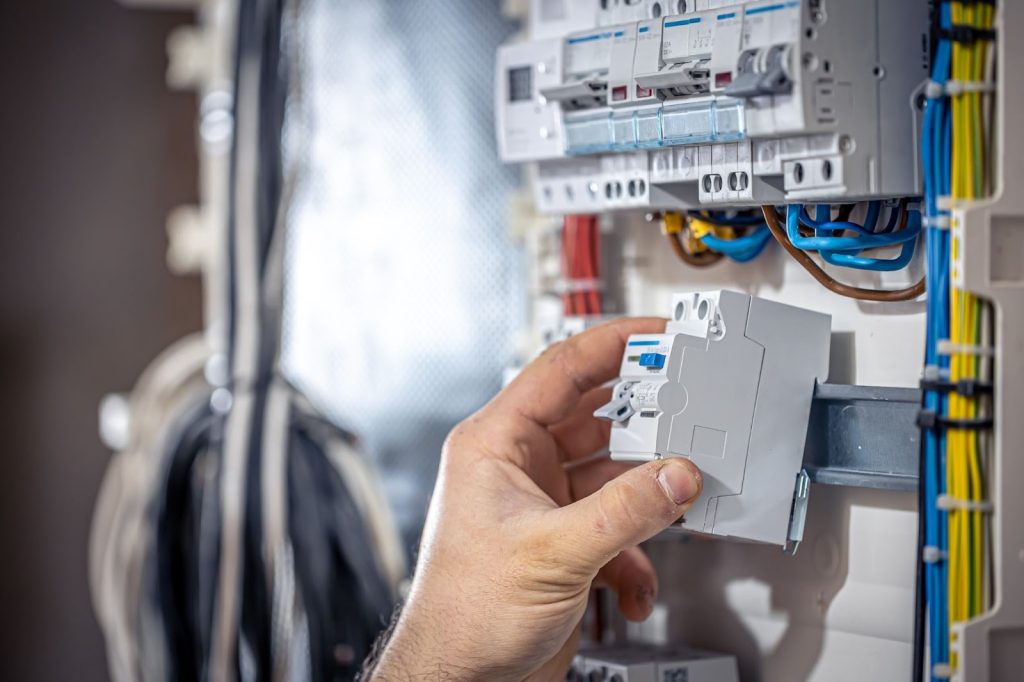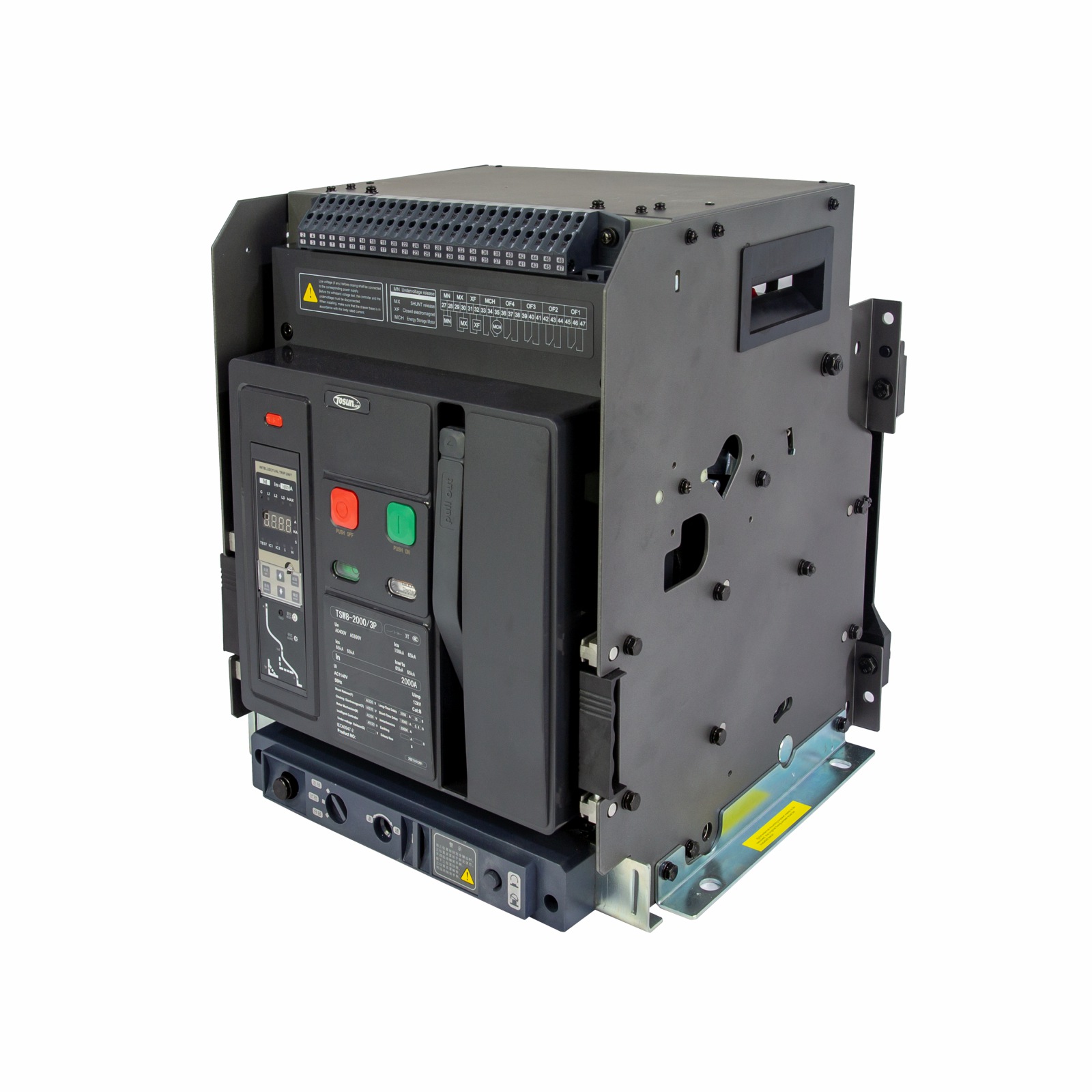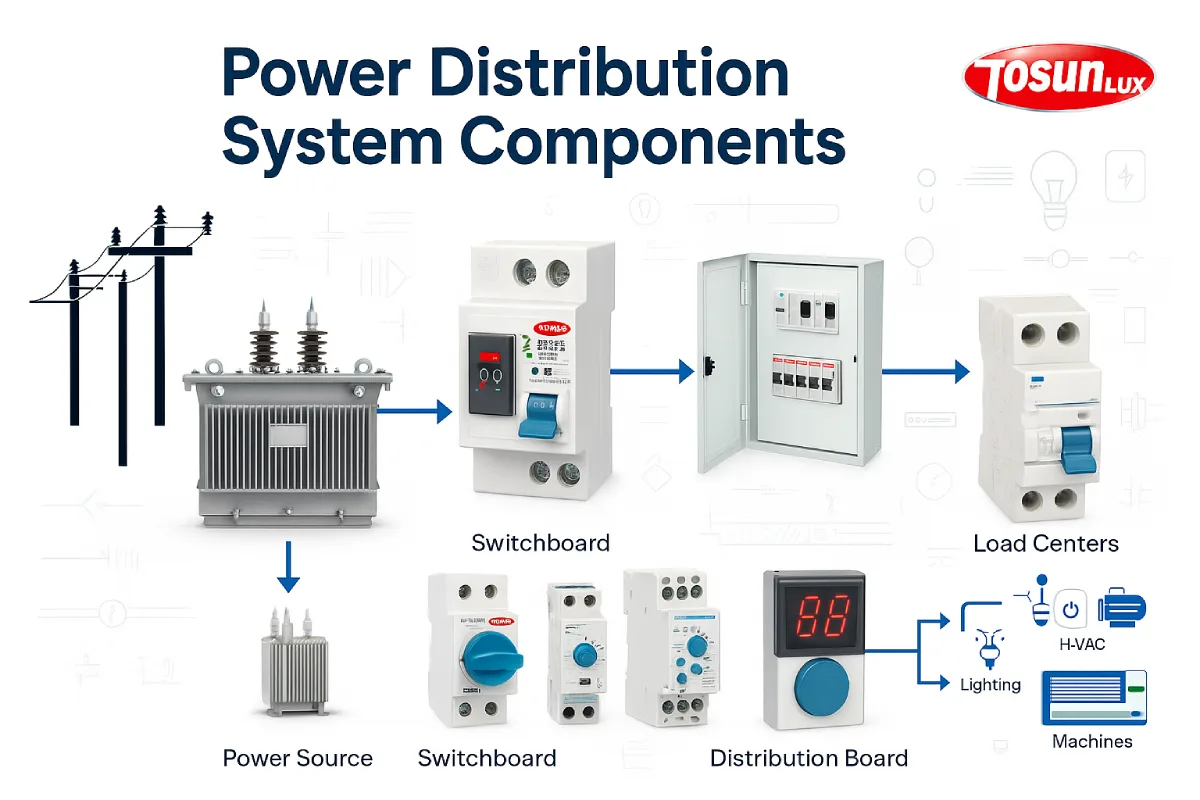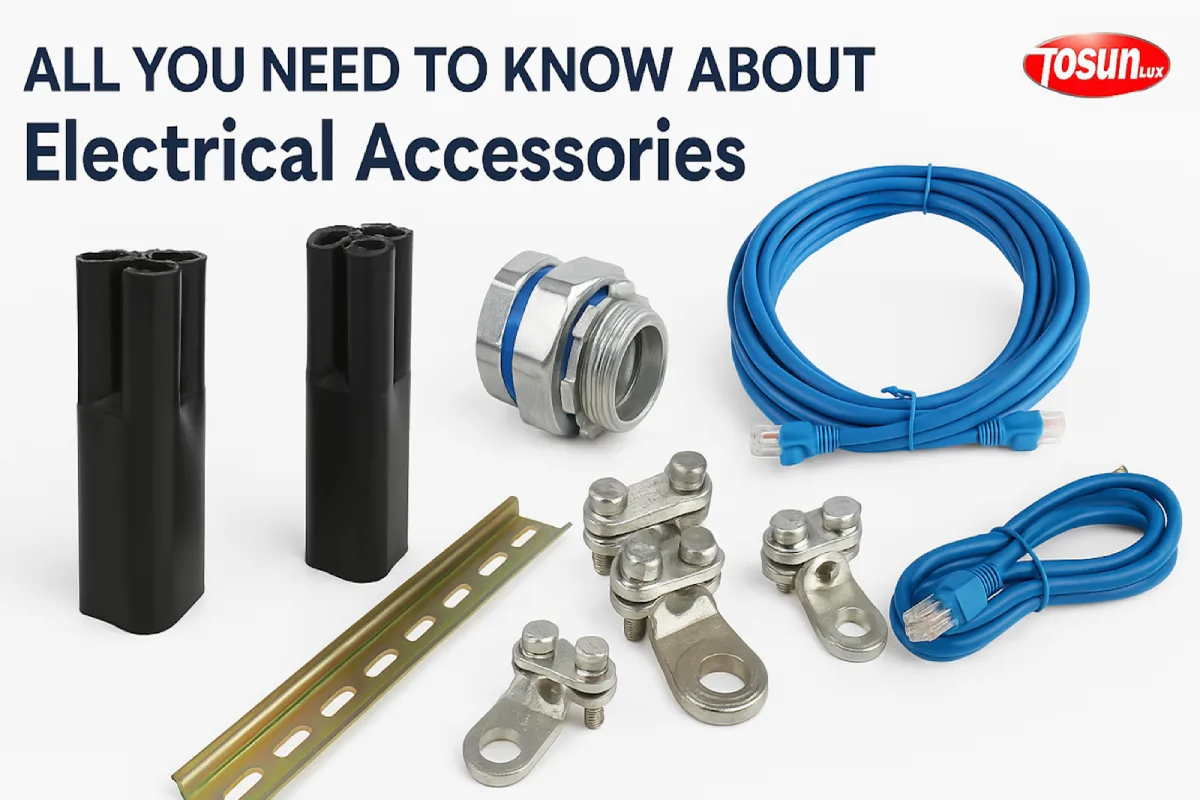เบรกเกอร์ปรับได้คืออะไร และทำงานอย่างไร?
สารบัญ
สลับ
หนึ่ง adjustable circuit breaker is a type of protection device that allows users to modify its trip settings to match specific electrical load conditions. Unlike fixed breakers, which have preset limits, adjustable models provide more flexibility and precision in managing current flow, preventing unnecessary shutdowns and enhancing safety. Whether you’re powering data centers, machinery, or commercial systems, these breakers help keep operations smooth and efficient.
In this article, we’ll break down how adjustable circuit breakers work, why they matter, and how they improve the reliability and safety of your electrical system. Whether you’re a homeowner, technician, or facility manager, understanding this tool can help you reduce power interruptions and equipment failures.
What Is an Adjustable Circuit Breaker?
An adjustable circuit breaker is a protective device used in electrical systems that can be manually set to trip at different current levels. This type of breaker is commonly used in industrial and commercial settings where electrical demands vary across different equipment.
Unlike standard circuit breakers, adjustable types have settings that let you control when the breaker trips due to overload, short circuit, or ground fault. These settings include current limits and time delays.
ประเด็นสำคัญ:
- It protects against electrical faults by breaking the current flow.
- You can customize its trip settings to match specific electrical needs.
- It’s ideal for environments with variable power demands, like data centers and factories.
How Does an Adjustable Circuit Breaker Work?
The core components of an adjustable circuit breaker include:
- ติดต่อเรา: Conduct electricity when closed.
- Trip unit: Detects faults and opens contacts.
- Adjusting mechanism: Allows setting changes for trip parameters.
When a fault occurs, such as an overload or short circuit, the breaker trips, disconnecting power to prevent damage. What makes adjustable models unique is the ability to fine-tune:
- การ amount of current tolerated.
- การ response time before tripping.
This helps avoid unnecessary power shutdowns in cases where short surges are expected, such as when motors start up.
Types of Adjustable Settings You Should Know
When using an adjustable thermal magnetic circuit breaker or an adjustable MCCB, understanding the available settings is essential for proper configuration. Below are the most commonly adjustable parameters:
1. Continuous Amps Setting
This setting determines the highest level of current the breaker can carry without tripping.
Adjustment Range: Typically between 20% to 100% of the breaker’s rated current.
2. Long-Time Delay
This delay allows the breaker to tolerate moderate overcurrents for a set period before tripping.
ดีที่สุดสำหรับ: Equipment with short-term inrush currents, like motors during start-up.
3. Short-Time Pickup and Delay
These settings control the breaker’s response to short-term, high-current spikes.
Use Case: Ideal for motor control and equipment that experiences brief current surges.
4. Instantaneous Pickup
This function triggers the breaker to trip immediately when the current exceeds a specific threshold.
วัตถุประสงค์: Provides immediate protection against short circuits, with no intentional delay.
5. Ground Fault Pickup
This setting detects low-level ground faults by sensing current leakage to the ground.
ผลประโยชน์: Helps prevent electric shock hazards and potential damage to equipment.

Where Are Adjustable Circuit Breakers Used?
Adjustable trip circuit breakers are ideal in environments where electrical loads vary or fluctuate. Here are some examples:
ศูนย์ข้อมูล
They require uninterrupted power, but startup currents from servers may spike. Adjustable breakers prevent unnecessary trips during these brief surges.
เครื่องจักรอุตสาหกรรม
Motors and compressors often have high inrush currents. Time delay settings help accommodate these conditions.
อาคารพาณิชย์
When powering mixed loads—such as elevators, lighting, and HVAC—adjustable settings make it easy to configure one breaker for multiple applications.
Energy-Intensive Setups
Such as solar power systems or HVAC installations, where loads shift depending on usage and environment.
Why Choose an Adjustable Circuit Breaker?
- การปรับแต่ง
You can tailor protection to specific equipment, improving performance and reducing downtime.
- ความอเนกประสงค์
One breaker can support multiple types of devices with different current needs.
- Cost-Efficiency
Minimizes the chance of nuisance tripping, which can halt operations and require costly resets.
- เพิ่มความปลอดภัย
Settings like ground fault pickup help identify insulation failures or exposed wires before they become hazardous.
How to Set Up an Adjustable Circuit Breaker
สำคัญ: Always consult a qualified electrician for installation and adjustments.
Step-by-Step Setup:
- Identify Load Requirements: Know the rated current and operational range of your equipment.
- Set Continuous Current: Adjust it to slightly above your device’s normal operating current.
- Configure Delay Settings: Based on the type of equipment (e.g., motors need longer delays).
- Test the Breaker: Simulate load conditions to verify that the breaker performs as expected.
If unsure, refer to the manufacturer’s manual or work with a professional.
How to Maintain an Adjustable Circuit Breaker
Proper care ensures your breaker works reliably and lasts longer. Here’s what you should do:
- Regular Cleaning
Remove dust and debris that can affect performance.
- การตรวจสอบภาพ
Look for cracks, loose screws, or corrosion on the contacts.
- Functional Testing
Run trip tests and verify response times using equipment like a micro-ohm meter.
- การสแกนอินฟราเรด
Use thermal imaging to detect hot spots that indicate potential failures.
A good rule of thumb is to perform maintenance every six months in high-load or high-voltage environments.
Conclusion: Make Your Power System Smarter and Safer
An adjustable circuit breaker is a smart investment in electrical safety, system performance, and long-term cost control. With features like time delays, trip setting options, and ground fault detection, it gives you the flexibility to optimize protection for your specific needs. At TOSUNlux, we offer a wide collection of adjustable MCCBs, thermal magnetic breakers, and circuit protection devices that help you build reliable, safe, and scalable electrical systems. Whether you’re an installer, engineer, or facility manager, we’ve got a solution that fits.
Ready to find the right breaker for your project? Explore our collection at TOSUNlux and discover electrical solutions made simple.
FAQs About Adjustable Circuit Breakers
What is an adjustable circuit breaker?
It’s a breaker with customizable trip settings to protect against overcurrent, short circuits, and ground faults.
How is it different from a fixed breaker?
Fixed breakers trip at a preset value, while adjustable models let you change the settings to suit different loads.
Can I adjust the settings myself?
Only if you’re a trained electrician. Incorrect settings can cause equipment damage or safety risks.
When should I use one?
Use it when powering systems with fluctuating or heavy startup currents, such as motors or data servers.
โทรศัพท์: +86-577-88671000
อีเมล: ซีอีโอ@tosun.com
Skype: tosunelectric
วีแชท: +86-139 6881 9286
วอตส์แอป: +86-139 0587 7291
ที่อยู่: ห้องเลขที่ 1001 Wenzhou Fortune Center,Station Road, Wenzhou, China
ขอใบเสนอราคา
ติดต่อเราผ่าน WhatsApp
 : +86-139 0587 7291
: +86-139 0587 7291 ภาษาอังกฤษ
ภาษาอังกฤษ ภาษาสเปน
ภาษาสเปน รัสเซีย
รัสเซีย ภาษาฝรั่งเศส
ภาษาฝรั่งเศส อาหรับ
อาหรับ ภาษาโปรตุเกสของบราซิล
ภาษาโปรตุเกสของบราซิล อังการา
อังการา ตุรกี
ตุรกี โปแลนด์
โปแลนด์ เนเธอร์แลนด์
เนเธอร์แลนด์ อิตาลี
อิตาลี ภาษาอินโดนีเซีย
ภาษาอินโดนีเซีย ฮินดี
ฮินดี อัลดู
อัลดู อัมเบรลล่า
อัมเบรลล่า เชสเชียร์
เชสเชียร์ ภาษาไทย
ภาษาไทย มงโกล
มงโกล วาร์ซี
วาร์ซี ชคิป
ชคิป เอลลิก้า
เอลลิก้า


